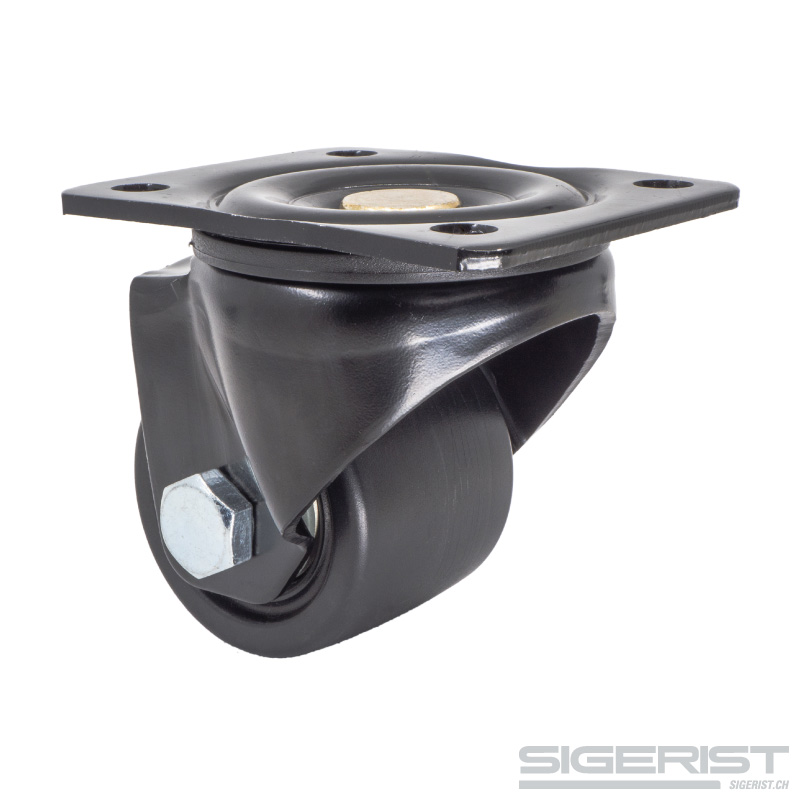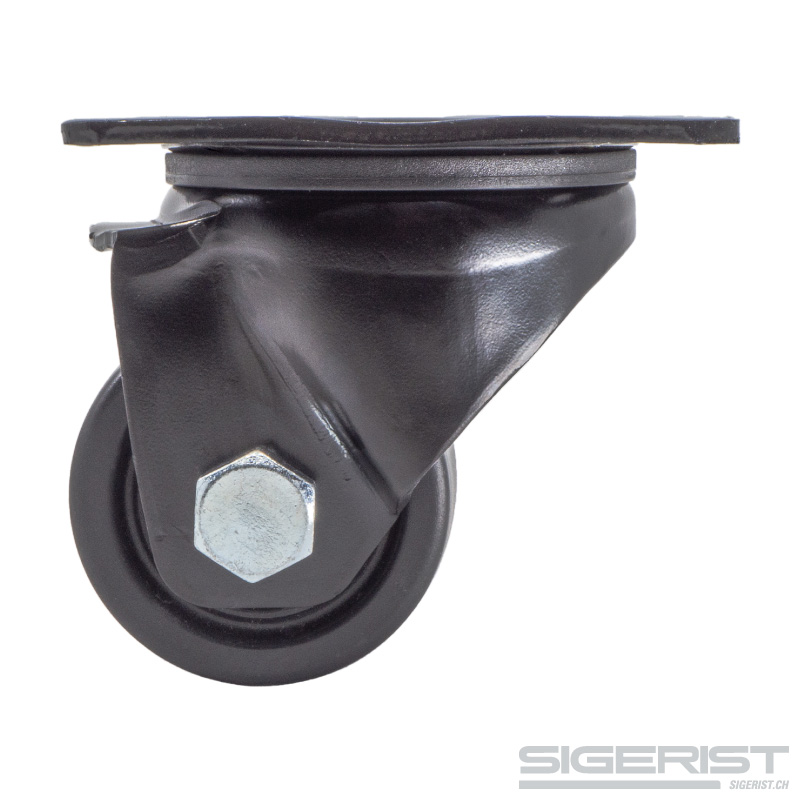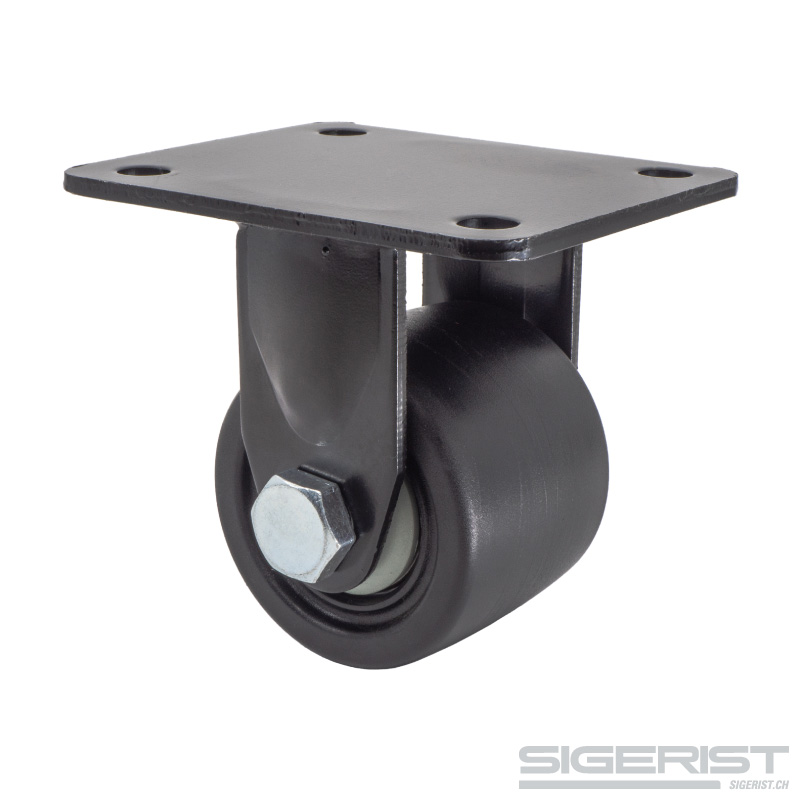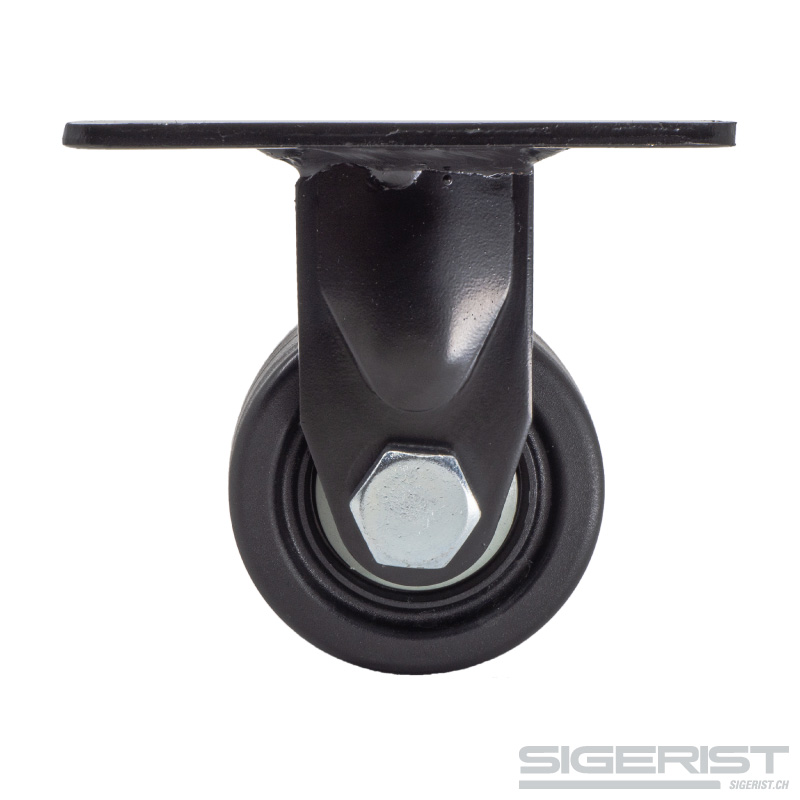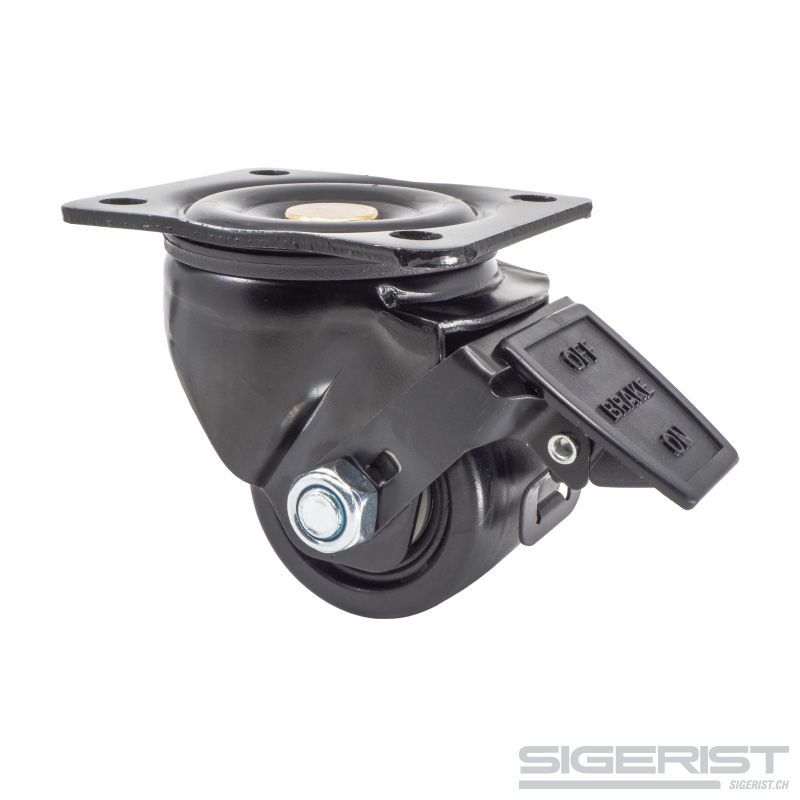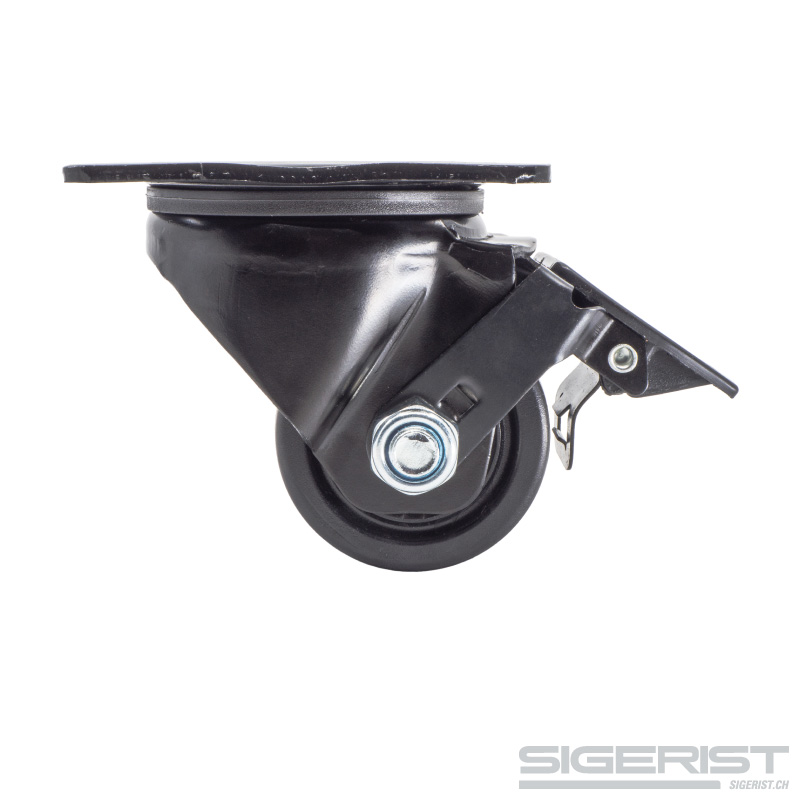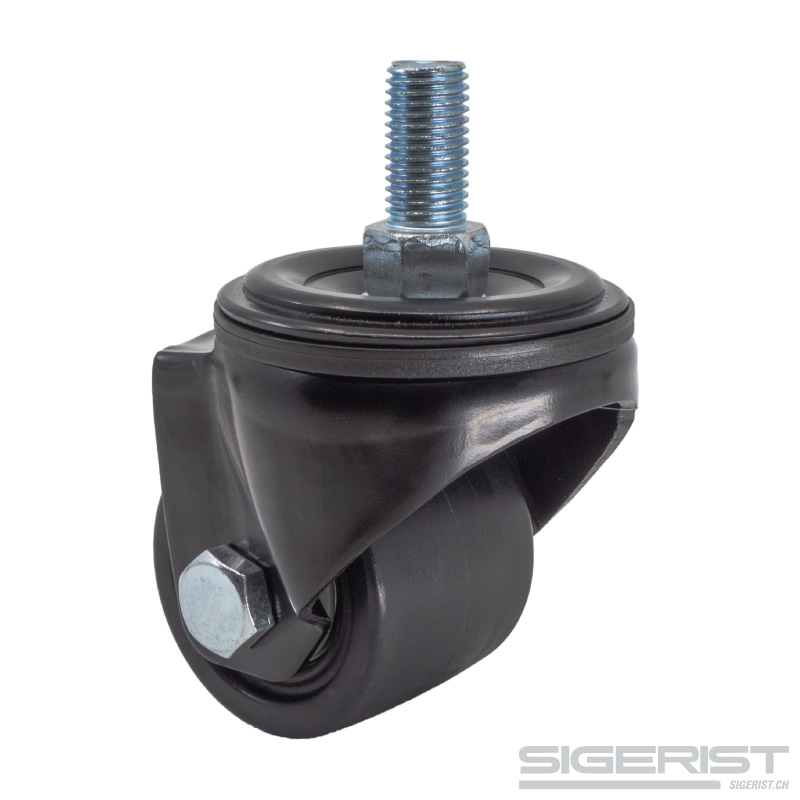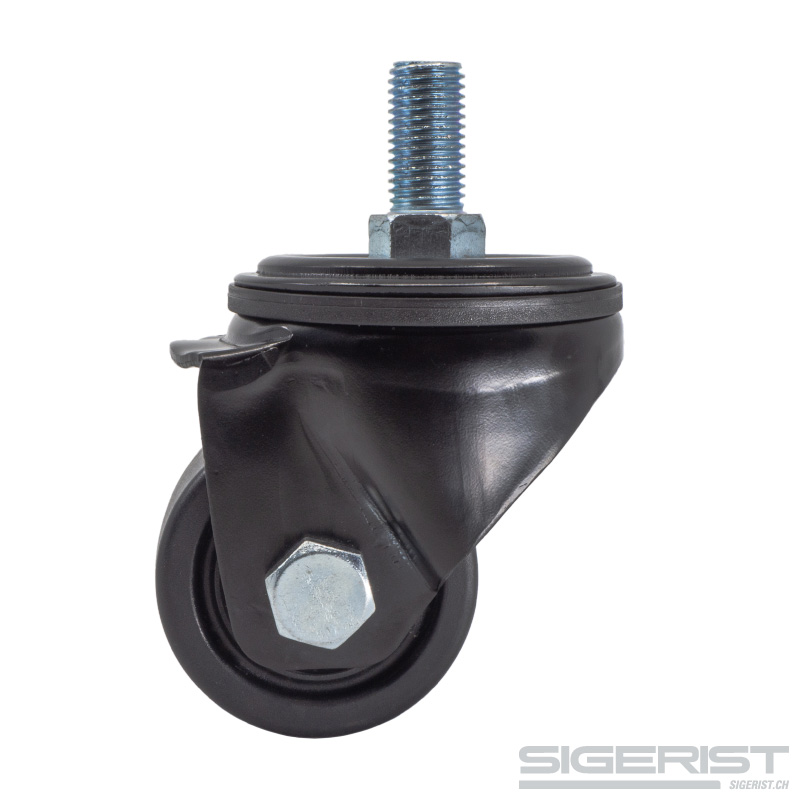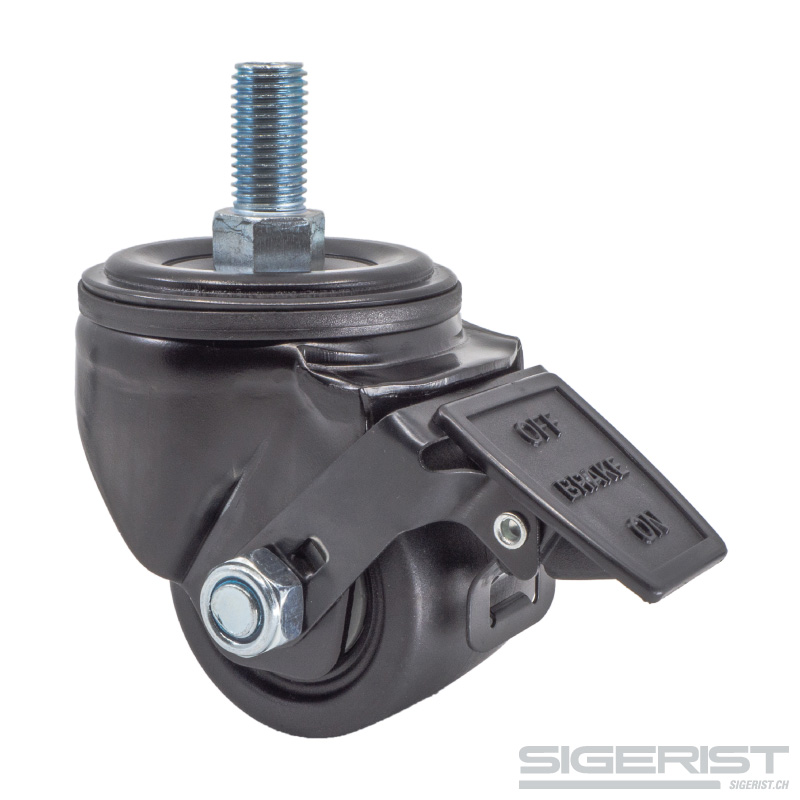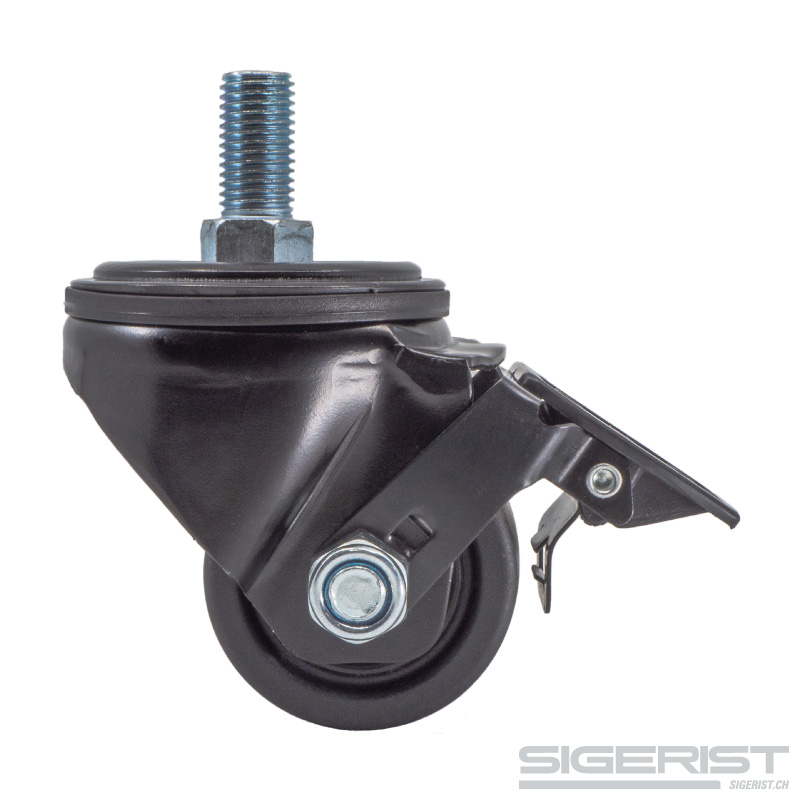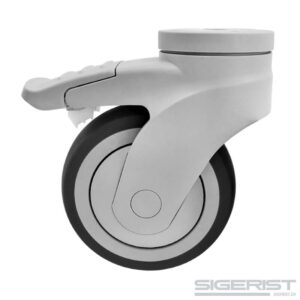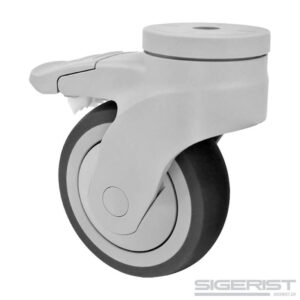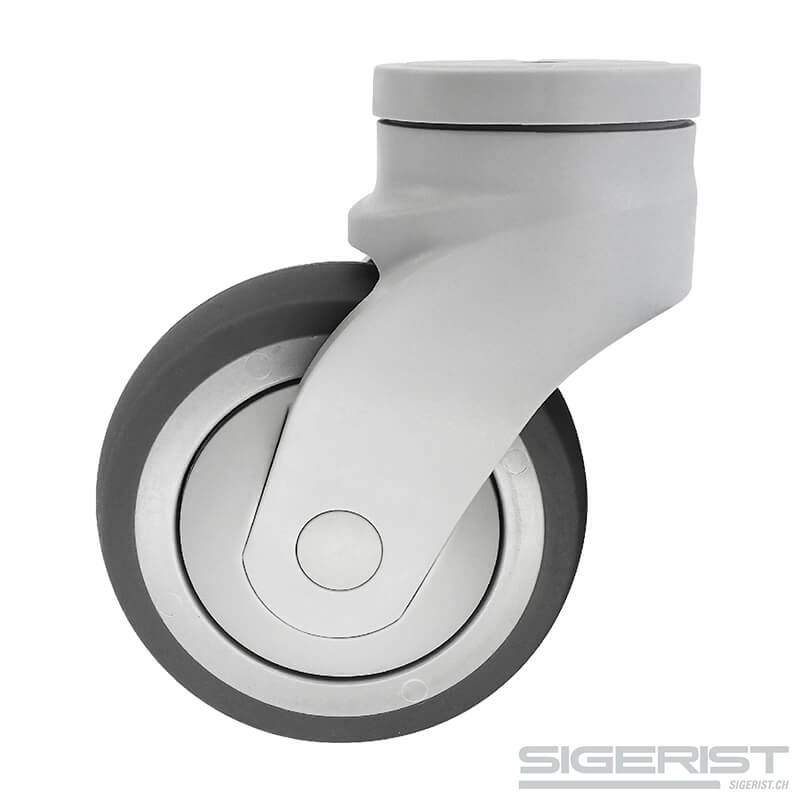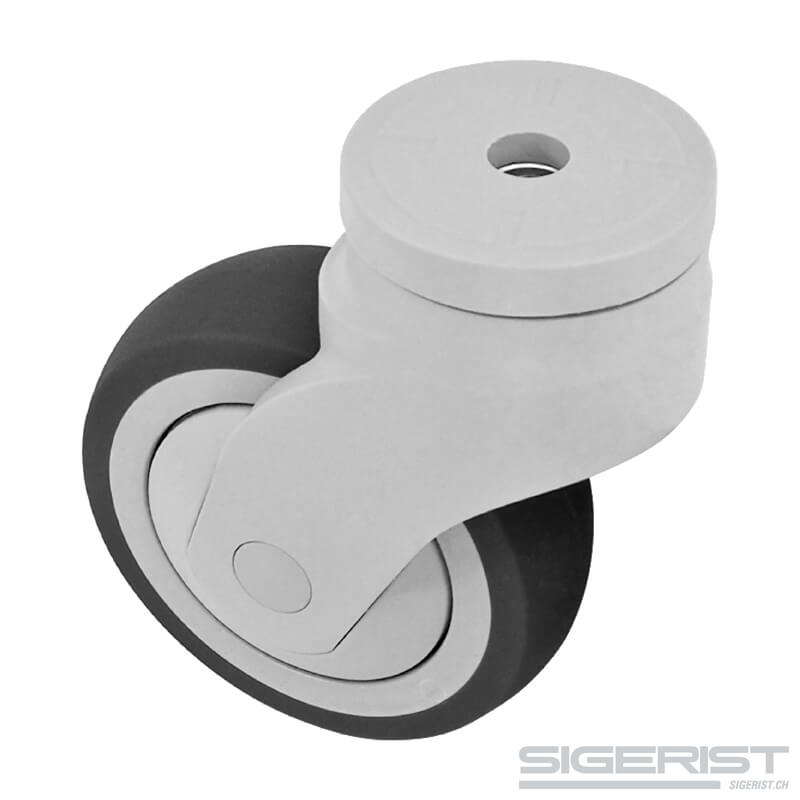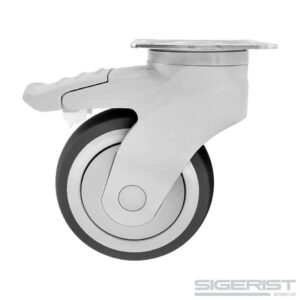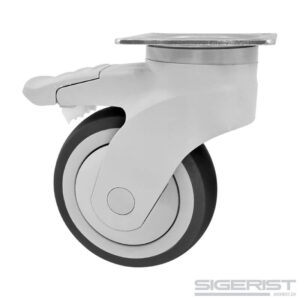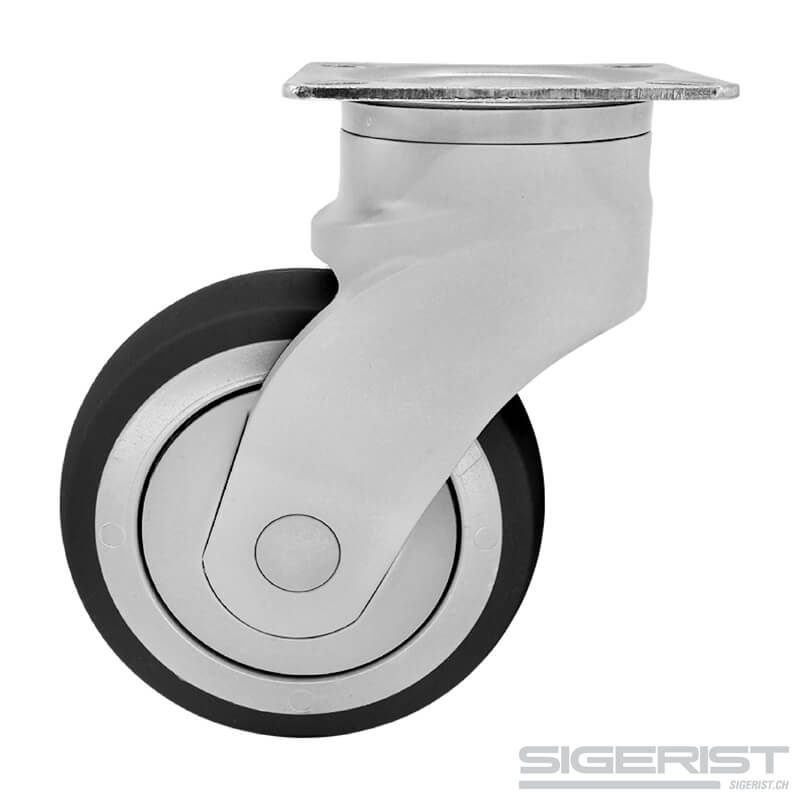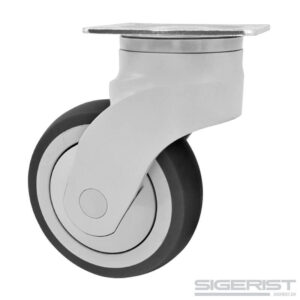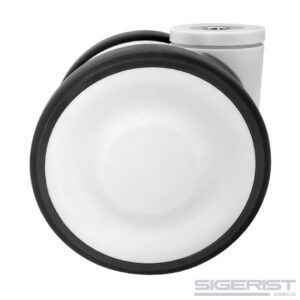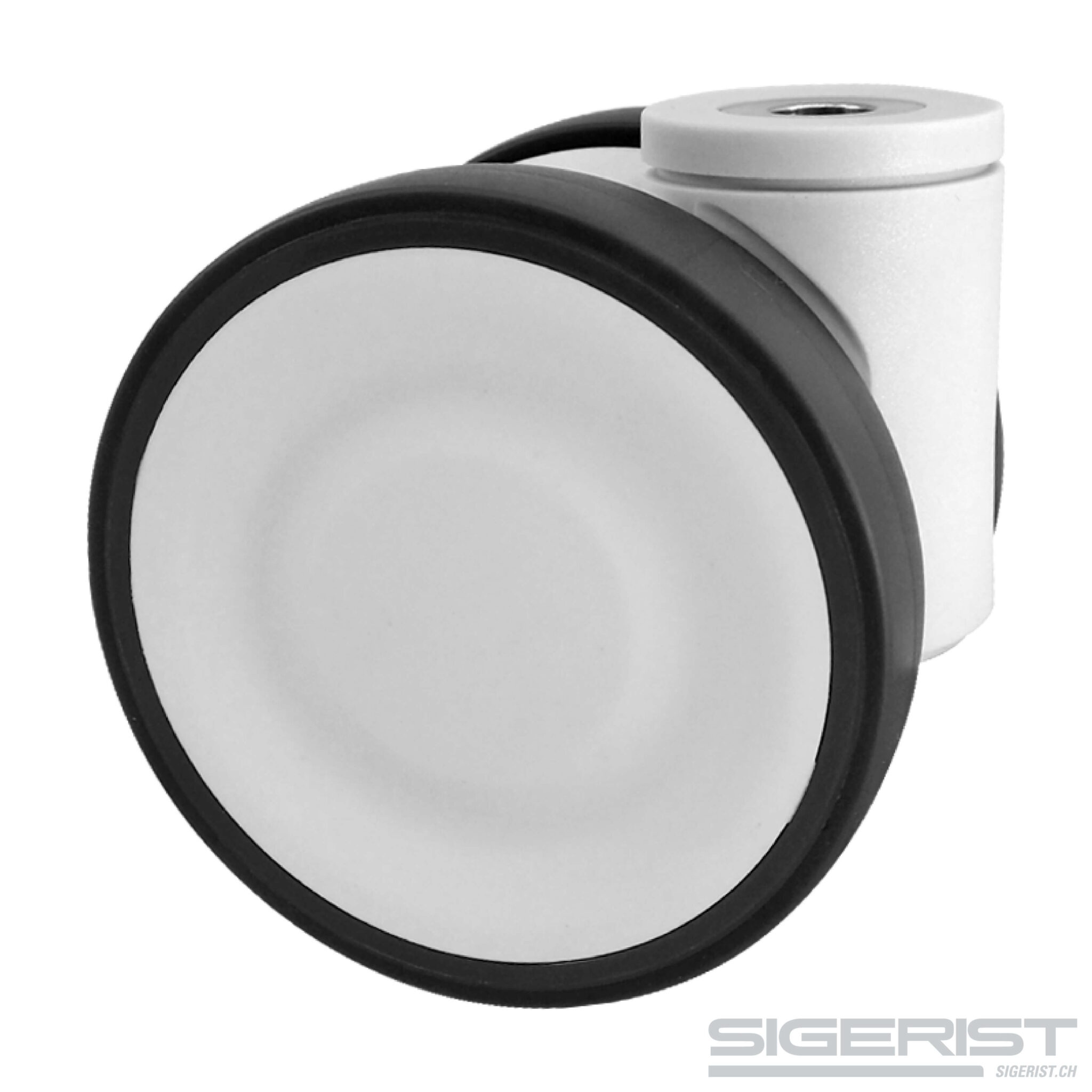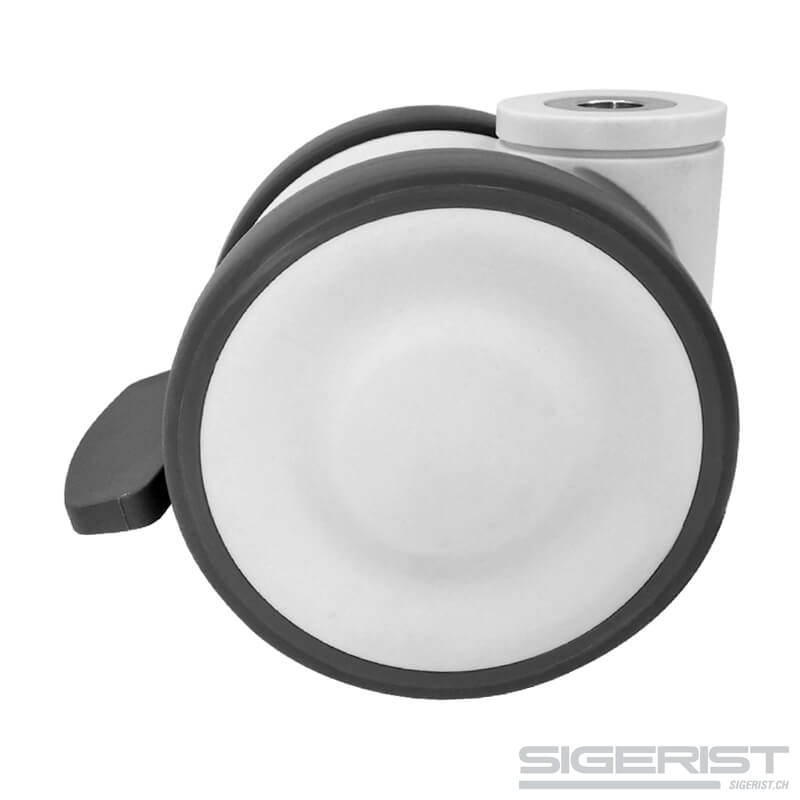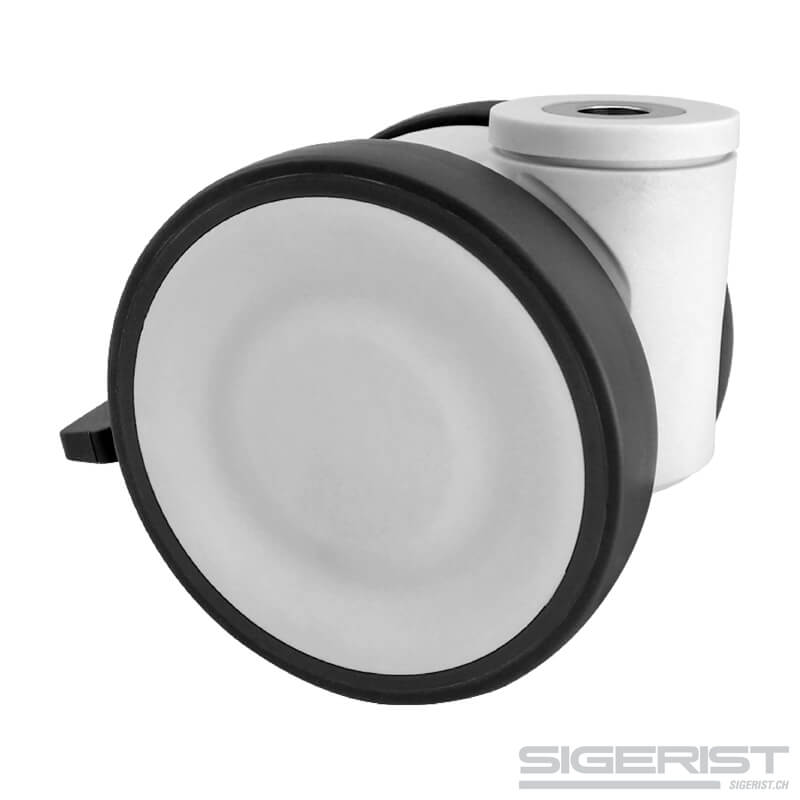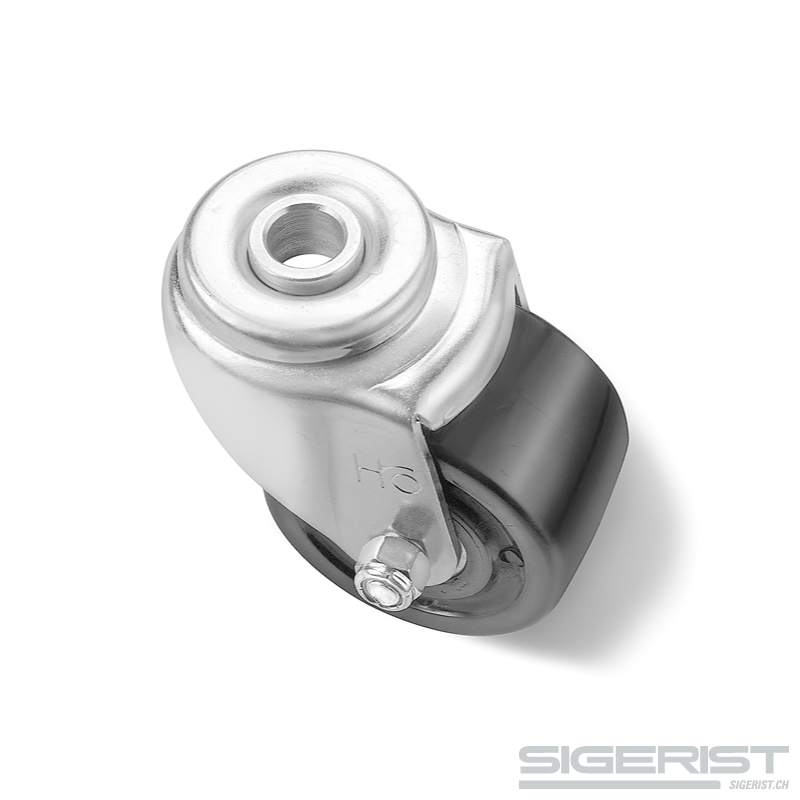Assembly of casters
Fastening points
The mounting points of a caster are decisive for installation. A distinction is made between the following mounting options:
- with plate
- with pin
- with back hole
For a caster with plate standard dimensions exist in the industry. In Europe, for example, this is a hole spacing of 80 x 60 mm. A machine manufacturer knows exactly how to dimension the fixing points on the machine so that a standard caster with plate fits perfectly. This makes the construction somewhat simpler. In furniture construction, the size of the panel does not play such a big role, since, for example, a caster with a panel can easily be attached to wood. In the medical sector, on the other hand, other panel sizes predominate. A caster with plate has four holes, which can be fastened to the corresponding object with four screws (example for a castor with special plate: heavy-duty castor ACMT-600F with minimum overall height).
A caster with pin (also called caster with threaded pin) does not require an additional screw for fastening, but the caster can be connected directly to the furniture or trolley using the threaded pin.
For a caster with back hole an additional screw is required with which the caster can be attached to the desired object (example: steering roller A 3202 with large back hole and low overall height).

